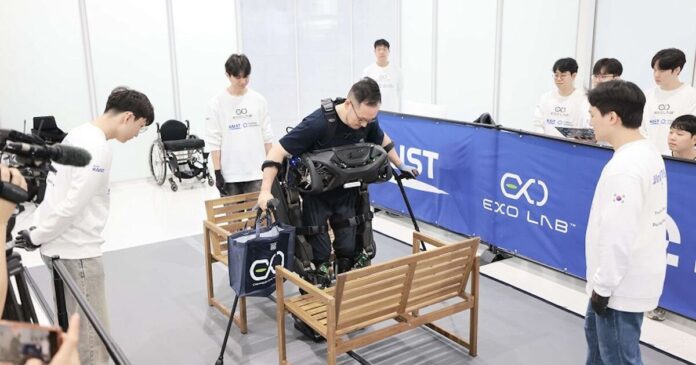Revolutionizing Mobility: Exoskeletons for Paraplegic Patients
Exoskeletons have been a game-changer for paraplegic patients, helping them to walk and regain their independence. However, the latest development from KAIST (Korea Advanced Institute of Science and Technology) is taking this technology to the next level. The WalkON Suit F1 is an innovative exoskeleton that can walk itself to a patient seated in a wheelchair, install itself, and help the user stand and walk.
The Evolution of Exoskeletons
Professor Kyoung-Chul Kong from KAIST’s Department of Mechanical Engineering has been working on exoskeletons for over a decade. The first WalkON Suit was revealed in 2016, and since then, the research team has made significant improvements. By 2020, the team had increased the walking speed to 3.2 km/h (1.98 mph) and entered the fourth-generation prototype into the Cybathlon in Switzerland. The Cybathlon is a "cyborg Olympics" that was launched in 2016 by ETH Zurich to drive advances in assistive technologies.
The WalkON Suit F1: A Next-Gen Exoskeleton
The WalkON Suit F1 is a cutting-edge exoskeleton that features a front-docking system, allowing the paraplegic user to remain seated as the exoskeleton installs itself around the body and legs. The system actively controls the center of its weight against the pull of gravity, preventing it from toppling over as the user is assisted into a standing position. The exoskeleton also has powerful motors and control algorithms that enable the user to walk with ease, and even features vision recognition for obstacle detection.
Putting the WalkON Suit F1 to the Test
The WalkON Suit F1 was recently put to the test in the 2024 Cybathlon Exoskeleton Race. Paraplegic Seunghwan Kim, a staff researcher at KAIST, served as the pilot for the competition. The team elected to live broadcast its attempt from special facilities of the company Angel Robotics, which was set up by Professor Kong in 2017 to commercialize wearable robots. The competition involved completing various missions within a tight time slot, including moving by sidesteps between narrow chairs, moving boxes, walking freely unassisted by crutches, passing through a narrow door, and working on food preparation in the kitchen.
A Winning Performance
Kim and the WalkON Suit F1 completed all missions in an impressive 6 minutes and 41 seconds, securing first place in the competition. The second and third places went to a Swiss team and Thai engineers, respectively, but neither of these teams managed to finish all tasks within the allotted 10 minutes. The win is a testament to the advanced technology and capabilities of the WalkON Suit F1.
Conclusion
The WalkON Suit F1 is a revolutionary exoskeleton that is changing the game for paraplegic patients. Its ability to walk itself to the user, install itself, and provide walking assistance is a major breakthrough in assistive technology. The success of the WalkON Suit F1 in the 2024 Cybathlon Exoskeleton Race is a promising sign of the potential for exoskeletons to improve the lives of people with disabilities. As technology continues to advance, we can expect to see even more innovative developments in the field of exoskeletons, enabling people with disabilities to live more independently and fulfill their potential.

